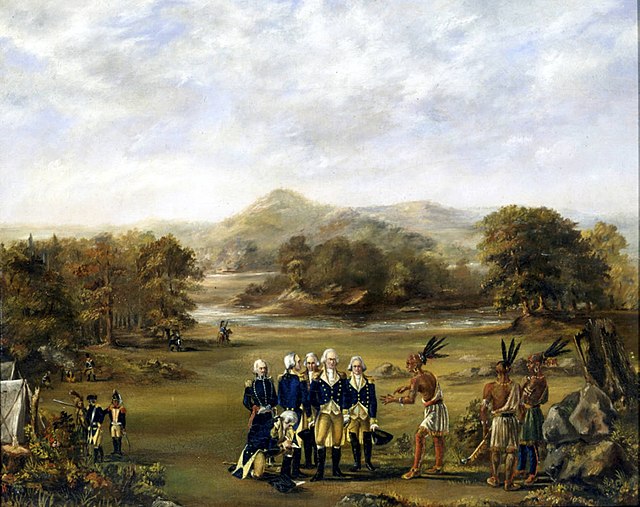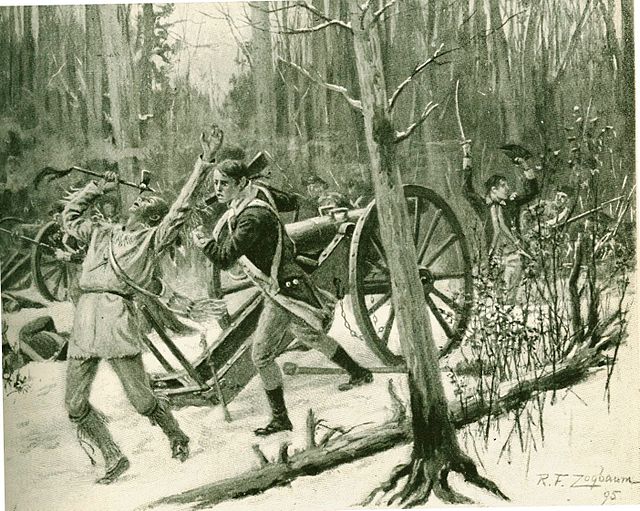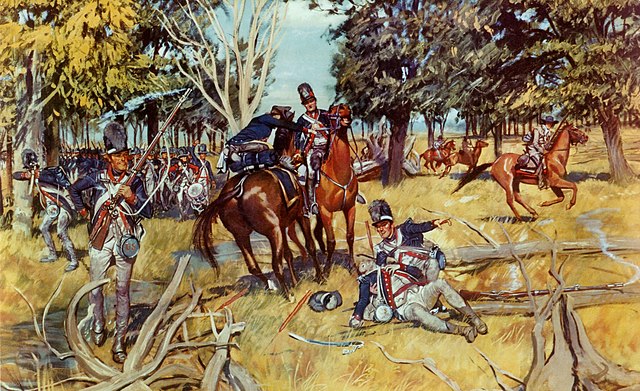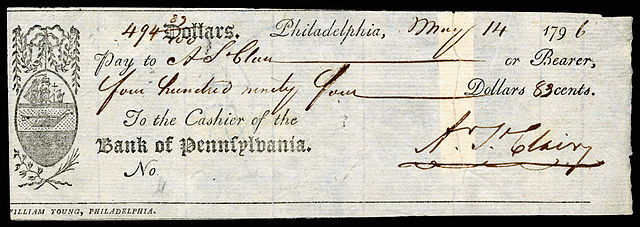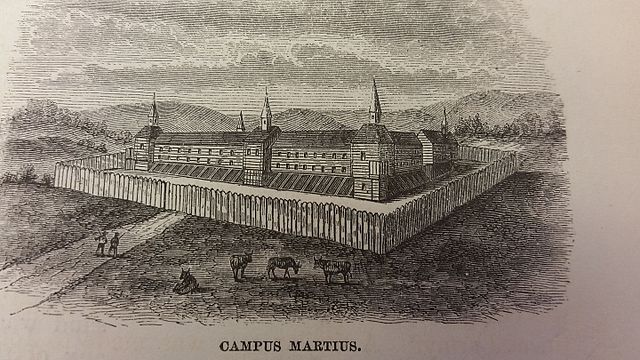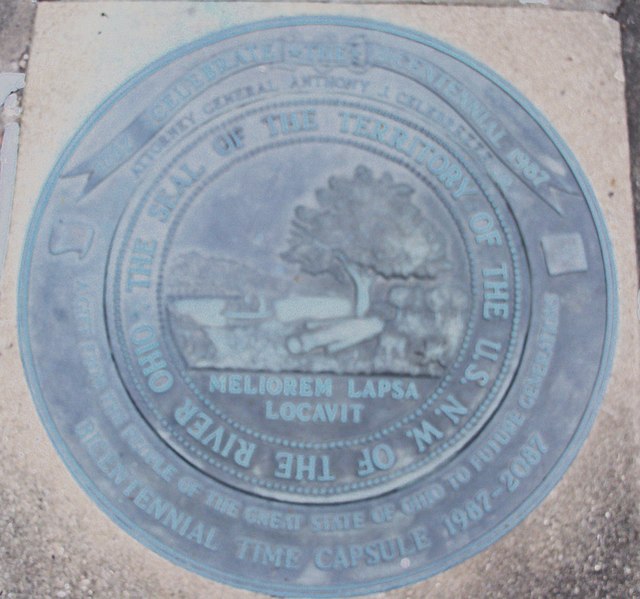The Northwest Indian War (1785–1795), also known by other names, was an armed conflict for control of the Northwest Territory fought between the United States and a united group of Native American nations known today as the Northwestern Confederacy. The United States Army considers it the first of the American Indian Wars.
This depiction of the Treaty of Greenville negotiations may have been painted by one of Anthony Wayne's officers.
St. Clair's Defeat (Rufus Fairchild Zogbaum, 1896)
The Great Indian Council, 1793 (Lewis Foy), depicts the conference near Amherstburg. Seated on chairs from right to left are U.S. commissioners Pickering, Lincoln, and Randolph. The British officer in red may be McKee or Elliot, the Native orator may be Carry-One-About.
The Legion of the United States at the Battle of Fallen Timbers, 1794
The Northwest Territory, also known as the Old Northwest and formally known as the Territory Northwest of the River Ohio, was formed from unorganized western territory of the United States after the American Revolution. Established in 1787 by the Congress of the Confederation through the Northwest Ordinance, it was the nation's first post-colonial organized incorporated territory.
Check signed by Arthur St. Clair while governor of the Northwest Territory, 1796
Rufus Putnam. This portrait by James Sharples Jr. is in the collection of Independence National Historical Park, and hangs in the Second Bank of the United States building in Philadelphia.
Campus Martius ("Field of Mars" in Latin) was named after the part of Rome of the same name. This site, including the Rufus Putnam House, is now part of the Campus Martius Museum in Marietta, Ohio.
Seal of the Northwest Territory over a time capsule outside the Campus Martius Museum. The Latin phrase, "He has planted one better than the one fallen," signifies the replacement of wilderness by civilization.

